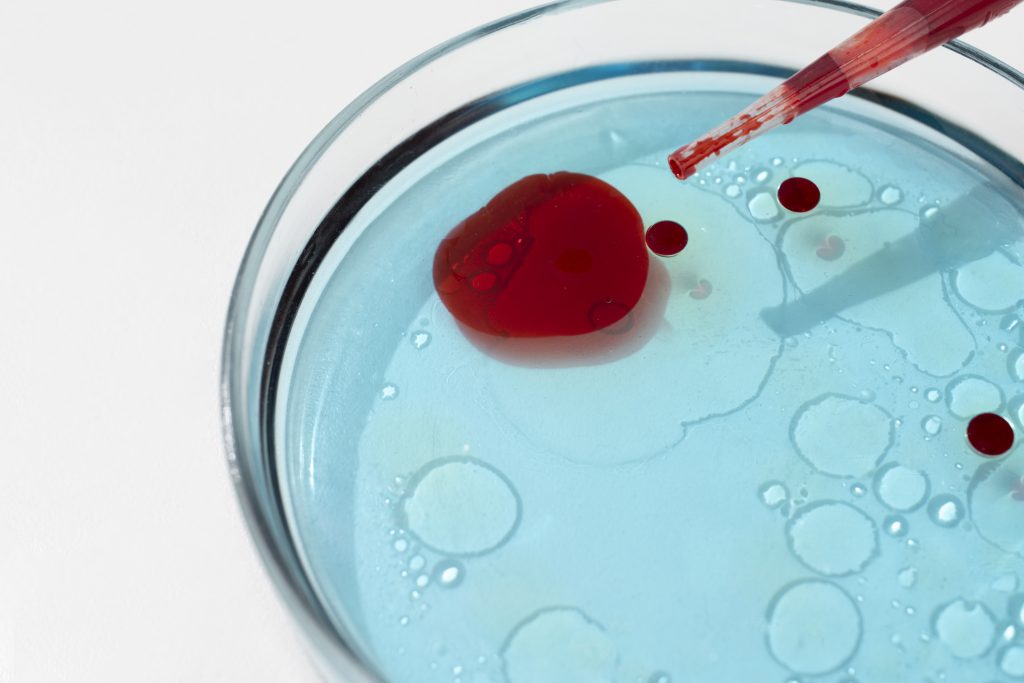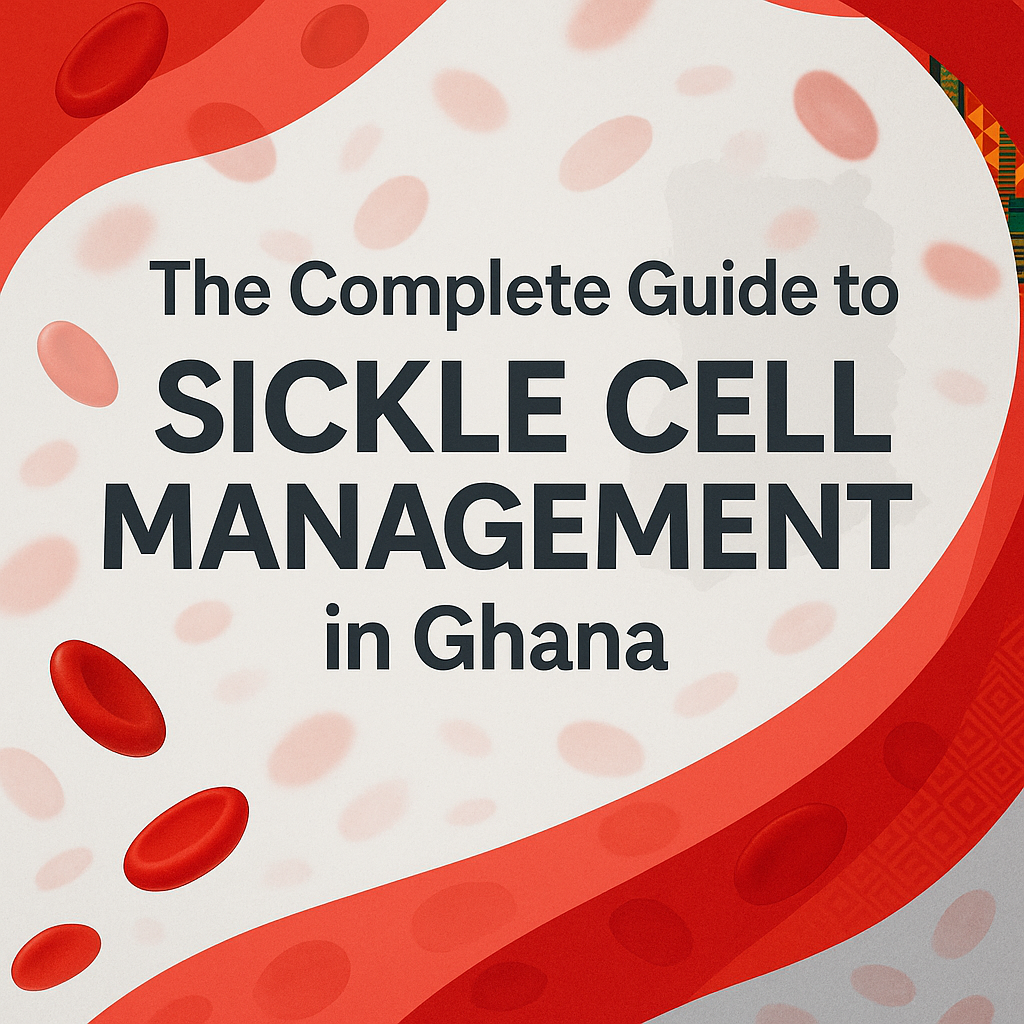If you have ever heard of sickle cell disease, you probably have some questions.
One of those big questions people ask is: Can sickle cell be cured? It’s a fair question—and an important one.
In this post, we’re going to walk through some of the most common things people want to know about sickle cell. We’ll talk about treatments, whether a cure is possible, and what life looks like for those living with the condition.
Can Sickle Cell Be Cured?
This is the question on almost everyone’s mind. Can sickle cell actually be cured—or is it something you just manage for life?
Let’s break it down.

What the Experts Say
Right now, there is a cure—but it’s not simple. According to health experts like the World Health Organization (WHO) and the National Institutes of Health (NIH), sickle cell disease can sometimes be cured through a bone marrow or stem cell transplant. But here’s the thing—it’s not for everyone.
Most people living with sickle cell don’t have access to the treatment, either because it’s risky, expensive, or they don’t have a perfect donor match.
So technically, yes—a cure exists. But practically? It’s a bit more complicated.
Functional Cure vs. Full Cure
Here’s where it gets interesting. You’ll often hear terms like “functional cure” and “complete cure.” What’s the difference?
- A complete cure means the disease is gone, completely. No more sickle cells, no more symptoms, no risk of future complications.
- A functional cure means the person still carries the disease in their DNA, but their symptoms are controlled so well that it’s almost like they don’t have it.
Think of it like this: a functional cure doesn’t erase the problem from your body, but it makes your life feel normal again.
Treatments That Come Close
So, what are the options?
- Bone marrow transplant is the closest thing we have to a full cure. This involves replacing the faulty blood-forming cells with healthy ones from a donor. When it works, it can stop the disease in its tracks.
- Gene therapy is the new kid on the block—and it’s exciting. Scientists are now using advanced tools like CRISPR (Clustered Regularly Interspaced Short Palindromic Repeats) to fix the gene that causes sickle cell. This kind of treatment is still being tested but early results are promising.
The catch? These treatments are complex, costly, and not yet available to everyone who needs them.
Who Can Actually Get These Cures?
This is the hard part. Even though bone marrow transplants can work, only a small number of patients are eligible. Why?
- They need a perfect donor match, often from a sibling
- The procedure is risky, especially for adults
- Access is limited to places with advanced medical facilities
- Cost is a huge barrier in many parts of the world
That’s why the vast majority of people with sickle cell are treated with medications and pain management, not curative treatments.
The Bigger Picture
According to the NIH, over 20 million people worldwide are living with sickle cell disease. Most of them are in Africa, where access to advanced treatment is limited.
Even in countries with top hospitals, less than 20% of sickle cell patients are eligible for a curative transplant.
So, while a cure exists on paper, we still have a long way to go in making it real for everyone.
Good News?
Yes. Very good news.
New research is moving fast. Gene therapy is showing real promise. Clinical trials are growing. And many organizations are working to make curative treatments more accessible, especially in high-burden countries.

We may not be fully there yet, but we’re getting closer to a world where a cure isn’t just possible, it’s accessible.
But even if a person can’t get cured just yet, here’s a question people often ask:
Can Sickle Cells Go Back to Normal?
This is a question that comes up a lot, especially after diagnosis. And the short answer is: not naturally, and not completely, but it’s a bit more nuanced than that.
Let’s start with what’s happening inside the body.
What Actually Happens to Red Blood Cells?
In people without sickle cell disease, red blood cells are soft, round, and flexible. They move easily through blood vessels, carrying oxygen to every body part.
But with sickle cell disease, something changes at the genetic level. The body produces abnormal hemoglobin—hemoglobin S—which causes the red blood cells to bend into a crescent or “sickle” shape.
These sickle cells are stiff, sticky, and tend to clump together. That’s what leads to blocked blood flow, pain episodes, and damage to organs over time.
Can Those Sickled Cells Turn Back to Normal?
Unfortunately, once a red blood cell sickles, it can’t “unsickle” or go back to its original shape. That change is permanent for that particular cell. The damage has already been done.
Your body does make new blood cells all the time, but in people with sickle cell disease, the new ones are also misshaped, unless a treatment is actively changing the conditions under which they’re made.
So no, the cells themselves don’t revert on their own.
What About Treatments Like Hydroxyurea or Bone Marrow Transplants?
Great question.
Hydroxyurea, a common medication for sickle cell, doesn’t fix the shape of the cells, but it helps the body produce a different type of hemoglobin (called fetal hemoglobin) that doesn’t cause sickling.
This can reduce pain, lower the risk of complications, and help people feel a lot better. But it doesn’t turn already sickled cells back to normal.
On the other hand, a bone marrow transplant—if successful—can actually stop the body from making sickled cells altogether. The body starts producing healthy red blood cells instead. That’s the closest we get to a “reset,” but again, it’s only possible for a small group of patients.
Gene therapy is also showing promise in changing how red blood cells are formed, but it’s still in the trial stage for most people.
So, What Does This Mean for Daily Life?
While sickled cells don’t return to their normal shape, that doesn’t mean life stops. Far from it. With the right care – early diagnosis, regular checkups, and smart lifestyle habits – many people with sickle cell disease live full, active lives. They work, raise families, travel, and thrive.
But it’s also true that the disease can change over time. Some people notice new challenges as they grow older. Which raises another important question:
Does Sickle Cell Get Worse With Age?
This is a very real concern for many people living with sickle cell—or caring for someone who does. And the honest answer is: it can, but not always, and not in the same way for everyone.

What Happens As the Body Gets Older?
Sickle cell disease is a chronic condition, which means it lasts a lifetime. Over time, if not properly managed, the repeated sickling of red blood cells can start to take a toll on the body.
When sickled cells block blood flow over and over again, it can cause lasting damage to organs like the lungs, kidneys, and heart. Some people may also experience issues with their eyesight or bones. Others may develop conditions like leg ulcers or face problems with fertility.
And then there’s the fatigue. Chronic tiredness becomes more common as the body works harder to cope with fewer healthy red blood cells.
Adulthood Comes With New Challenges
As children, many people with sickle cell are closely monitored by pediatric specialists. But once they enter adulthood, that constant medical support often drops off.
Suddenly, they’re managing it on their own—while juggling work, relationships, and responsibilities. And this is where things can start to shift.
- Pain crises may become more frequent or more intense
- Organ damage from years of silent strain can start showing up
- Mental health challenges—like depression or anxiety—can add a new layer of complexity
According to this study, adults with sickle cell are at higher risk for complications like stroke, pulmonary hypertension, and kidney problems, especially if they haven’t had consistent care from a young age.
But Here’s the Good News
Sickle cell doesn’t automatically get worse with age. A lot depends on how well it’s managed early on.
People who receive routine care, stick to their treatment plans, and avoid known triggers often do much better over time. The earlier the interventions—like hydroxyurea, vaccinations, or screening for organ function—the more you reduce the long-term risks.
So yes, age can bring new challenges. But it can also bring more awareness, better treatment, and stronger systems of support.
And speaking of support, what can you do to actually stay healthy while living with sickle cell?
How Do Sickle Cell Patients Stay Healthy?
Living with sickle cell isn’t easy, but many people are doing just that: living. And not just surviving, but thriving.
The truth is, while there’s no one-size-fits-all routine, there are habits and systems that can make a big difference. Staying healthy with sickle cell often comes down to small, daily choices and consistent support.

Let’s look at what really helps.
Hydration, Nutrition, and Avoiding Triggers
Water is your best friend. Dehydration can lead to sickling episodes, so drinking plenty of fluids is one of the simplest but most powerful daily habits.
Eating well also plays a major role. A balanced diet—rich in leafy greens, fruits, iron-rich foods, and lean proteins—supports healthy blood production and strengthens the immune system.
And then there are the triggers. These vary by person but often include things like extreme cold, overheating, stress, or even high altitudes. The key is knowing your body and learning to avoid the things that set off pain crises.
Regular Medical Checkups Matter
Staying ahead of complications means keeping up with doctor visits, even when you’re feeling fine.
Routine checkups allow doctors to monitor organ health, check for silent complications, and adjust medications like hydroxyurea or folic acid supplements. They also help you catch infections or issues early, before they turn into something more serious.
Vaccinations and Infection Prevention
Because sickle cell can weaken the immune system, patients are more vulnerable to infections.
Vaccines—especially for things like pneumonia, meningitis, and influenza—are essential. So is staying up to date with booster shots and getting early treatment for any signs of illness.
Simple steps like washing hands regularly, avoiding crowded places during flu season, and taking prescribed antibiotics (for kids especially) can go a long way.
Support Systems and Mental Health
This journey is not just physical—it’s emotional, too. Living with a chronic condition can lead to anxiety, depression, or feelings of isolation, especially for teenagers and young adults.
That’s why support groups, counselors, spiritual mentors, and family involvement can be life-changing. Talking to people who “get it” makes the journey feel lighter.
Community also helps—whether it’s church, school, or a local sickle cell support group. Being seen and supported matters.
Practical Tips That Make a Big Difference
- Warm clothing during colder seasons
- Pain management plans for early intervention during a crisis
- Light physical activity like walking or swimming (as tolerated)
- Knowing warning signs like chest pain, shortness of breath, or sudden fatigue—and seeking help immediately
These little things may seem small, but over time, they help prevent complications and maintain stability.
How You Can Help
Not everyone has access to this level of care—and that’s where community support becomes so powerful.
Many organizations are stepping in to fill the gap for vulnerable children and families, especially in rural and underserved areas. One of those is The Lords Blessings Foundation, a local initiative committed to reaching patients and their families affected by sickle cell in the community.
They provide education, essential supplies, medical support, and emotional care to families who would otherwise be forgotten.
Whether it’s through donations, volunteering, or simply spreading awareness, you can be part of the change. Supporting organizations like this helps save lives—literally.
Is There a Cure Coming Soon for Sickle Cell?
If you’ve been following health news lately, you might’ve heard whispers of something big happening in the sickle cell world. And it’s true, we’re closer than ever to a real, wide-reaching cure.

Let’s talk about it.
What’s New in Sickle Cell Treatment?
For decades, the go-to treatment for sickle cell has been managing symptoms—things like pain meds, blood transfusions, and drugs like hydroxyurea. Helpful, yes, but not curative.
But now, science is doing what science does best: pushing boundaries.
One of the most exciting developments? Gene therapy.
Researchers have started using a tool called CRISPR—think of it as molecular scissors—to cut out the faulty gene that causes sickle cell and replace it with a corrected version. In some patients, this has completely stopped the disease from progressing. That’s huge.
Another promising therapy comes from companies like Bluebird Bio, which is testing a method that reprograms a patient’s own stem cells to make healthy hemoglobin. In clinical trials, patients have gone months—even years—without a single pain crisis.
Are These Treatments Available Yet?
Some of them are getting close.
In fact, a few gene therapies have already received FDA approval or are in the final stages of review. That means we’re not just talking about theory—we’re talking about actual treatments that real people are starting to receive.
Of course, these are still new, complex, and expensive, so they’re not widely available yet. But the progress is real, and the momentum is building.
What Should Patients and Families Know?
First, this is a time for hope, not hype. These breakthroughs are promising, but they’re not magic buttons. Every patient is different, and not everyone will be a candidate for these new treatments right away.
That said, it’s incredibly important to stay informed. Knowing what’s out there—and what’s coming—puts you in a better position to ask the right questions, plan ahead, and advocate for better care.
Conclusion
So, can sickle cell be cured? It’s not a simple yes or no. A cure exists for some, and groundbreaking treatments are on the way. But for most people right now, the focus is still on managing the condition, staying healthy, and holding on to hope.
The good news? With early care, the right support, and up-to-date information, life with sickle cell can be full and meaningful.
If you or someone you love is on this journey, don’t walk it alone. Talk to a specialist, stay informed, and build a strong support system around you.
Have more questions? Drop them in the comments or share this with someone who needs hope today.



